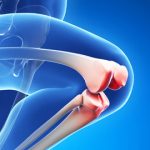(Reuters Health)—Patients with knee osteoarthritis (OA) can add hip-strengthening exercises to their workout to improve the ability to walk and maybe reduce pain, according to a research review. Based on pooled data from eight clinical trials with a total of 340 patients, hip strengthening exercises involving weights or elastic bands would help the most, the…

What to Do with Erosive, Inflammatory Osteoarthritis
CHICAGO—Is erosive, inflammatory osteoarthritis (EOA) a separate condition from osteoarthritis (OA)? Roberta Ramonda, MD, PhD, a rheumatologist at the University of Padova, Italy, spoke at the 2018 ACR/ARHP Annual Meeting on the clinical presentation of EOA and how it differs from OA. EOA is characterized by a frequent aggressive clinical course and occurs most often…
Walking Ability of OA Patients Linked to Cardiovascular Risk
New research explores the association of the ability to walk and the risk of cardiovascular disease in OA patients compared with the general population. During the study, researchers recorded a six-minute walking distance and measured arterial stiffness of participants. The results: Even among younger people, OA patients could not walk as far as those in the general population. Also, arterial stiffness was inversely associated with walking distance, suggesting walking is important to the cardiovascular risk profile of OA patients…
Does Loss of Skeletal Muscle Mass Increase the Risk of Knee OA?
Obesity is a well-known risk factor for knee osteoarthritis (OA), but data regarding the association of body composition (fat and muscle mass) with the risk of knee OA are lacking. Thus, it is not clear whether the effects of BMI, typically interpreted as effects of obesity, are truly due to excess adiposity rather than to overall loading due to the combined weight of body mass. Misra et al. undertook this study to examine the longitudinal association of body composition categories based on fat and muscle mass with the risk of incident knee OA…

FDA Advisory Committee Votes in Favor of Romosozumab Approval
An FDA advisory committee voted 18-1 in favor of approving romosozumab to treat postmenopausal women with osteoporosis.

OA Patient-Reported Outcomes Positive for Intra-Articular Injection
In a recent Phase 2 clinical trial, patient-perceived pain and function measures improved with SM04690, an injectable, disease-modifying osteoarthritis treatment currently in development…

Do Osteoporosis Screening Guidelines Meet Patient Needs?
A recent study found that clinical practice guidelines for osteoporosis screening vary in quality and recommendations—even within the same country. Assessing guidelines from 13 countries, researchers found osteoporosis screening standards have not improved over time and many fail to include patients in guideline development…

Post-Traumatic Osteoarthritis: Managing OA That Develops After Joint Injuries & Reconstructive Surgery
CHICAGO—Joint trauma is one of many potential drivers of osteoarthritis disease activity and structural progression. In Post-Traumatic OA: Pathogenesis, Clinical Evolution and Management, a session at the 2018 ACR/ARHP Annual Meeting, experts discussed the effects of sports and other injuries on even young patients’ joints. Post-traumatic osteoarthritis (OA) may account for 12% of hip, knee…

Nonsurgical Therapies for Knee OA Pain: From Medications to Bracing to Exercise, What Works & What Doesn’t
CHICAGO—Many nonsurgical therapies are available for knee osteoarthritis pain, but they vary greatly in effectiveness. “How should I proceed and figure out what to do with our patients?” asked David T. Felson, MD, MPH, professor of medicine at Boston University School of Medicine, during OA Management Without Surgery in 2018, a session at the 2018…

Emerging Treatments for OA: New Therapies Target Joint Pain, Not Just Structural Damage
CHICAGO—Are effective treatments for osteoarthritis (OA) on the horizon? In Emerging Treatments for Osteoarthritis at the 2018 ACR/ARHP Annual Meeting, experts discussed potential therapies to address OA structural progression, pain and inflammation. With an aging population and rising obesity rates, “we can expect the prevalence of osteoarthritis will only increase,” said Anne-Marie Malfait, MD, PhD,…
- « Previous Page
- 1
- …
- 10
- 11
- 12
- 13
- 14
- …
- 46
- Next Page »